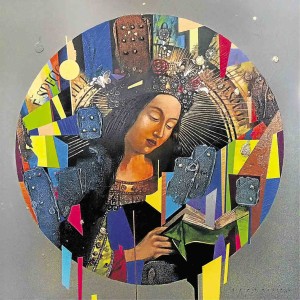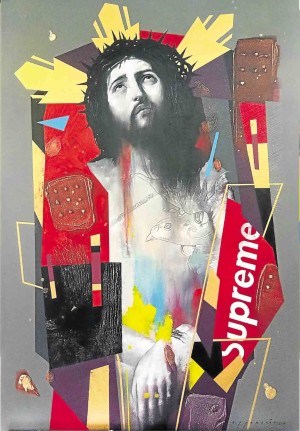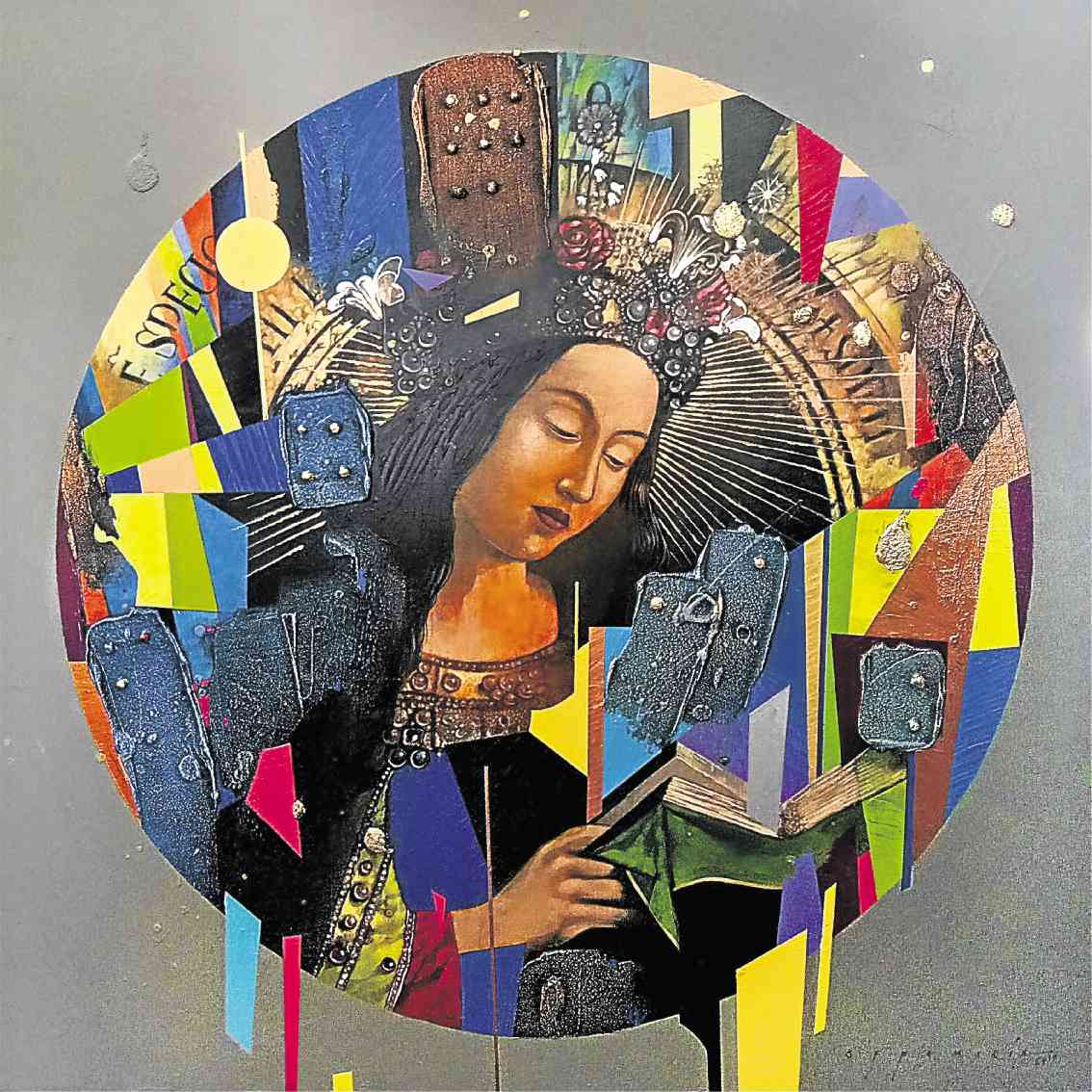
Derived from the Latin word retaulus, a merging of the words retro, which means “behind,” and tabula, which means “panel,” the retablo serves as the backdrop of any celebration in a church.
Its main functions are to provide a splendid setting for the saints enclosed in it, and to elucidate the liturgy performed in front of it.
Aside from being an aid for personal devotion, many of the sacred images within it are said to have healing potential as well. With its sacred purpose, the structure becomes holy as well.
In the exhibition “Retablo 2.0,” Wilfredo Offemaria Jr. restages retablos—and their holy and political role in Christianity—within the contemporary context. He uses these vessels of stories from the Scriptures as the springboard to present other narratives that reflect the Filipino society today.
In the history of Christian art, there is the dialectic between iconography and iconoclasm. The latter insists on the impenetrability of God, so that if there can be any representation of the divine, it should be in the form of abstraction.
Offemaria stands in between these two schools of thought in an attempt to balance figuration and abstraction in his set of works.
In the “Stations of the Cross” series, personages depicted in a figurative manner gradually fade out into the elaborate abstraction at the background. By using such technique, he hints on the limitations of the human mind when attempting to box spirituality and God within the boundaries of his comprehension.
In “Ang Tatlong Persona,” the faces are depicted figuratively but the bodies seem to sublimate into abstract forms associated with each of God’s personas in the Trinity. The triangular golden halos, which correspond to the three faces of a singular God, assert the contemporaneity of the work while keeping the rootedness in the concepts of the Christian tradition.

In “Dismayado,” the figure of the Suffering Christ is placed on streams of brightly colored geometric forms. The most prominent of these is the crown, which resembles sun rays curiously alluding to the sun in the Philippine flag.
In Offemaria’s works, figuration and abstraction are both used as means to revere the divinity of these personages. In as much as these retablos figuratively narrate stories from the Scriptures, the abstraction used by Offemaria shrouds some fragments of the narratives in Mystery.
In “Retablo 2.0,” Offemaria reimagines traditional Christian iconography while exploring relevant concepts through the assimilation of contemporary ideas and themes. Images of religious personages and entities are juxtaposed with eclectic elements and strong visual components, such as foreign iconography and intense textures and colors.
This contextualization of the traditional art form within the contemporary era may be seen as a door opening up to relevant, complicated and sensitive questions on faith, worship, religion, society and the role and boundaries of the artist as he is caught between the complexities surrounding him. —CONTRIBUTED
Visit Wilfredo Offemaria’s “Retablo 2.0” at the NCCA Gallery (A), G/F, NCCA Building, 633 Gen. Luna St., Intramuros, Manila; until May 31. Call 5272205 or e-mail [email protected].









































